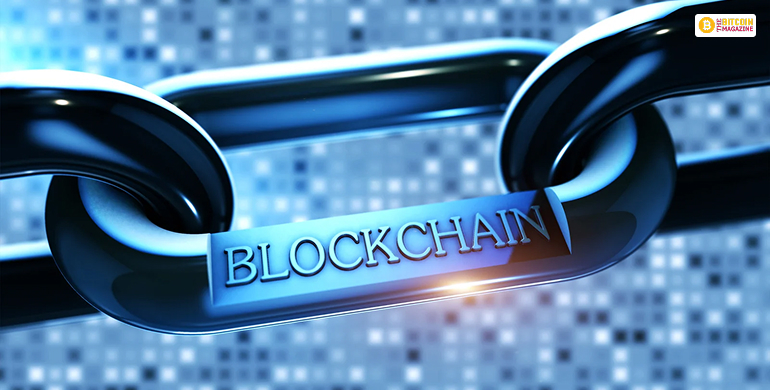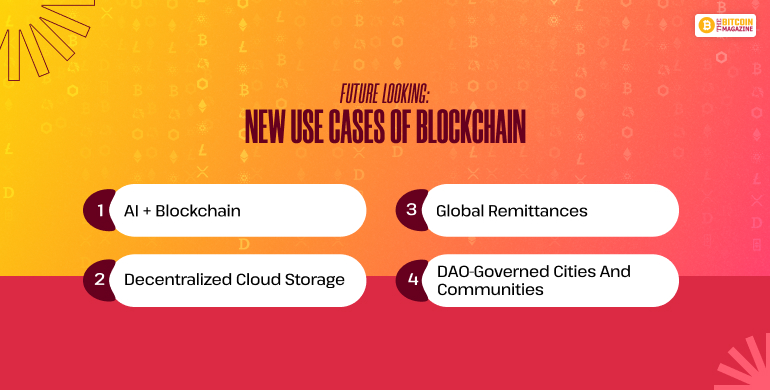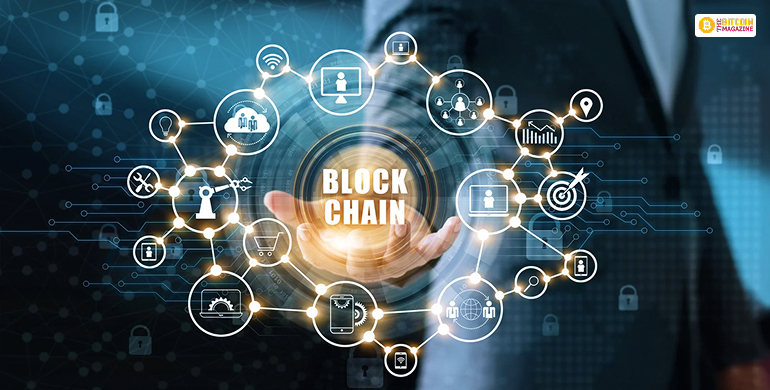Blockchain, once associated solely with Bitcoin and other virtual currencies, is much more than an internet accounts book.
It’s a revolutionary technology-similar to the internet in the 1990s-potentially revolutionizing how data is stored, transferred, and authenticated.
By enabling trustless, immutable, and decentralized record-keeping, blockchain technology addresses fundamental issues in data integrity, transparency, and security.
As industries struggle with inefficiencies, fraud, and centralized bottlenecks, blockchain is emerging as the technological solution of the future.
In this article, we’ll take an extensive look at the use cases of blockchain, backed by real-world implementations, ongoing developments, and future outlooks.
Key Takeaways:
- Blockchain has numerous uses in addition to cryptocurrency.
- Its security, decentralization, and openness provide answers to very real problems.
- Already impacted are a few of the largest industries, such as identity, government, logistics, healthcare, finance, and gaming.
- All many more will implement as regulatory understanding, scalability, and familiarity keep rising.
Understanding What is a Blockchain

Abbr. for blockchain, it is a distributed ledger containing data in blocks and chained in sequence. It is based on a peer-to-peer (P2P) network, where nobody can modify entries without consensus.
Key Features:
- Decentralization: No middleman controls the network.
- Transparency: Transactions are signed openly.
- Immutability: Data cannot be erased or modified after they are written.
- Security: Secure cryptography protects information and identities. These qualities are best suited for blockchain for any application of trust, traceability, auditability, and automation.
1. Financial Services and Banking
- Cross-Border Payments
Modern-day cross-border payments take 3–7 days and are Very costly since they involve intermediary banks. Blockchain reduces it to minutes or seconds at a infinitesimally reduced cost.
Example: Ripple (XRP) enables instant worldwide cross-border payments at close to zero cost and has joined hands with banks worldwide.
- Decentralized Finance (DeFi)
DeFi applies blockchain technology to provide open, permissionless financial services such as lending, insurance, and asset exchange without the need for an intermediary.
Key Platforms:
- Aave, Compound: Cryptocurrency lending and borrowing
- Uniswap, Curve: Decentralized exchange
- Yearn Finance: Yield optimization platforms and yield optimization
Physical asset such as real estate, art, or equity can be tokenized and sold on blockchain, made liquid and available to anyone, anywhere.
2. Supply Chain and Logistics
End-to-end global supply chains are riddled with inefficiencies, invisibility, and counterfeiting risk. Blockchain provides everyone one version of truth agreed upon.
- End-to-End Traceability
All on-chain operations (shipping, packaging, checks, etc.) are done for stakeholders to track goods from source to destination.
Example: IBM Food Trust verifies origin of fresh food and meat in order to prevent food recalls and consumer distrust.
- Inventory and Warehouse Automation
Smart contracts trigger restocking of stock, restocking, or payment on delivery success.
- Anti-Counterfeiting
With stamped QR codes or health certificates on products, customers can authenticate from blockchain records.
3. Healthcare
Health organizations are faced with patient anonymity, data interoperability, and record accuracy. Blockchain gives a patient-controlled sharing of data.
- Electronic Health Records (EHR)
Physicians and patients can view tamper-evident medical records kept institutionally with minimal redundancy and optimal continuity of care.
Example: The Medicalchain gives the patient authority over sharing access to his/her medical data provider by provider on a permission basis in a blockchain.
Blockchain provides protection of intellectual property, authentication of results, and monitoring trial data without alteration and providing transparency.
- Drug Authentication
Blockchain follows drugs from the factory floor to the pharmacy shelf, eradicating scope for counterfeit medicine.
4. Identity Management and Verification
Legacy identity systems are insecure and transferable. Blockchain facilitates self-sovereign identity (SSI)—users maintain ownership and selectively reveal information securely.
- Digital IDs
Blockchain IDs can be utilized by users for KYC (Know Your Customer), job application, education certificates, and voting.
Example: uPort and Civic provide the ability to design blockchain identity and attributes to reveal.
Zero-knowledge proofs enable an identity credential (e.g., over 18) to be verified without revealing the underlying data (e.g., date of birth).
5. Voting and Governance
Tampering with elections, intimidation of voters, and bureaucratic inefficacies afflict democracies worldwide. Blockchain enables secure, verifiable digital voting.
- Online Voting
Votes are stored encrypted on-chain to enable:
- One vote per person
- Tamper-evident result
- End-to-end verifiability
Example: Voatz tested blockchain voting for foreign residents and military personnel voting in US elections.
- DAO Governance
Decentralized Autonomous Organizations (DAOs) apply blockchain to enable transparent collective decision-making among startups and groups.
6. Intellectual Property and Creative Industries
Content is easily replicable on the Internet, and artists cannot assert ownership and receive reasonable compensation. Blockchain turns digital ownership upside down.
- NFTs and Digital Art
NFTs (Non-Fungible Tokens) are unique digital items on blockchain. They allow artists to:
- Sell and create digital art
- Earn royalties on resale
- Prove provenance and authenticity
Example: Beeple’s NFT painting sold for $69 million at auction at Christie’s, marking mainstream adoption.
- Copyright Management
Books, music, code on blockchain can be stamped with a time by authors to create legally binding proof of ownership.
7. Education and Credentialing
Degrees and qualifications issued by universities will probably be fake or difficult to authenticate. Blockchain provides tamper-proof digital diplomas and certificates.
- Blockchain-Based Diplomas
Institutions can issue on-chain diplomas so employers can quickly verify credentials.
Example: MIT and the University of Nicosia already provide blockchain diplomas.
- Learning Portfolios
Professional development (workshop, MOOCs, etc.) can be kept in a blockchain wallet, demonstrating an individual’s real competencies.
8. Real Estate
Paper, middlemen, and deceit slow down property transactions. Blockchain enables easy ownership verification and protection of contracts.
- Smart Contracts for Transactions
Smart contracts support escrow, payment, and title transfer, accelerating closings and decreasing attorney costs.
- Tokenized Property
Investors can purchase fractional ownership in a property, making it easier to be marketplace participants and inject liquidity into the marketplace.
Example: RealT and Propy are tokenized real estate investment and on-chain property sales.
9. Government and Public Services
Government public institutions can leverage blockchain to achieve transparency, accountability, and efficiency of services.
- Transparent Procurement
The entire vendor procurement and bidding process can be made transparent on-chain, removing nepotism and corruption completely.
- Land Titles and Property Records
Blockchains remove fraud, decrease conflicts, and secure citizens’ rights over property.
Pilot: Honduras and India have initiated pilot blockchain land titling pilots.
- Welfare Distribution
Smart contracts can be used by the government to disburse universal basic income (UBI) or subsidies in a manner that poor people get money with no leakage.
10. Energy and Environment
Smart solutions towards sustainable development are calling out energy consumption and emission management worldwide. Blockchain is at the forefront.
- Peer-to-Peer Energy Trading
Solar panel owners can sell surplus energy to neighbors directly due to blockchain-enabled smart meters.
Example: Power Ledger (Australia) facilitates decentralized microgrid trading.
- Carbon Credits and Emissions Tracking
Blockchain provides carbon market transparency to avoid double counting and emissions trading scams.
11. Data Integrity and Cybersecurity
With more ransomware and data breaches, blockchain provides an immutable data security guarantee platform.
- Secure Storage of Files
Instead of storing files, blockchain may store file hashes for integrity. Files are stored off-chain on IPFS or Arweave.
- Device Authentication (IoT)
Blockchain authenticates the identities of devices in Internet of Things (IoT) networks to avoid the risk of spoofing or hijacking.
12. Accounting and Auditing
Blockchain enables immediate auditing and reconciliation, reducing after-the-fact validation.
- Triple-Entry Accounting
Instead of credit and debit, blockchain offers a third record: impenetrable virtual history of payments that everyone can view.
Benefit: Regulator- and stakeholder-readable, real-time, tamper-evident audit trails.
13. Gaming and Metaverse
Blockchain revolutionizes the future of interactive digital economies in gaming to enable gamers to earn, trade, and own digital property.
- Play-to-Earn (P2E)
Gamers earn in-game cryptocurrency or NFTs not redeemed when they leave a game.
Example: Axie Infinity, The Sandbox, and Decentraland are blockchain asset economies.
- Interoperable Assets and Avatars
Assets, avatars, and goods are made transferable between virtual worlds by blockchain standards like ERC-721 and ERC-1155 on Metaverse platforms.
Future Looking: New Use Cases of Blockchain

With the everyday growth of blockchain technology, new uses are attained:
- AI + Blockchain: For data privacy and provenance of machine learning model
- Decentralized Cloud Storage: Similar to Filecoin and Storj
- Global Remittances: Reducing the cost of remittances for global migrant workers
- DAO-governed Cities and Communities: Smart community management on blockchain
Blockchain is not a buzzword anymore—it is the new web (Web3), finance (DeFi), commerce, and governance architecture.
Because business requires efficiency, trust, and transparency, blockchain is a flexible, scalable, and secure answer.
Whether it is changing the way money flows or changing the way people trust institutions, uses for blockchain are as close as the edge of human imagination.
Also Read

